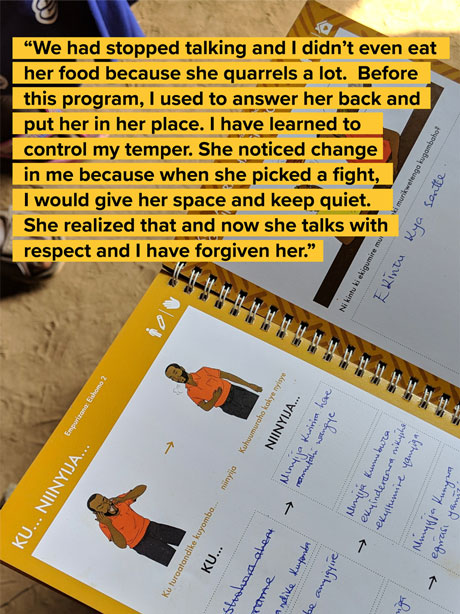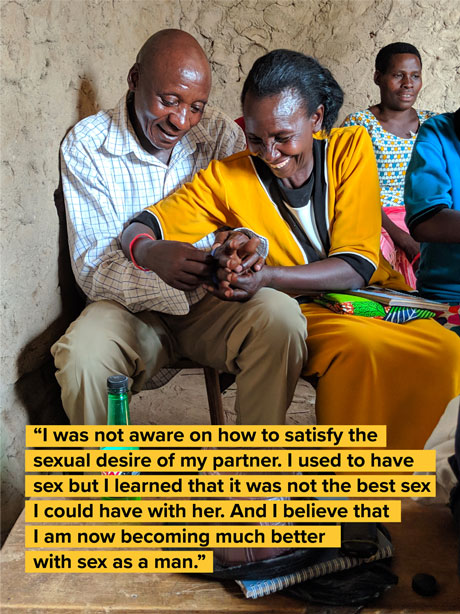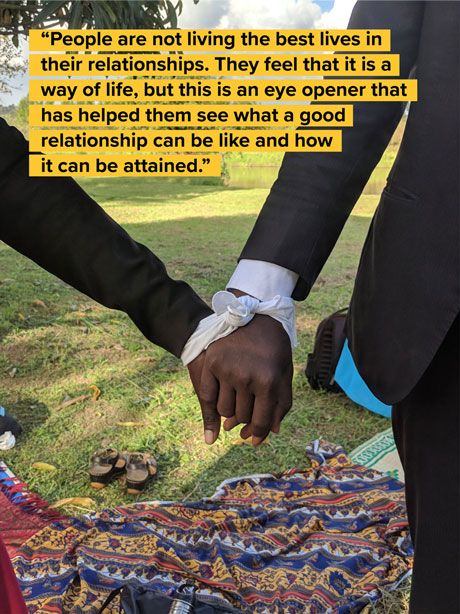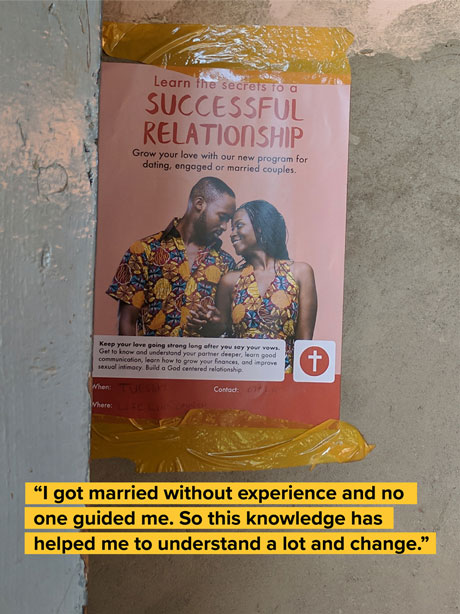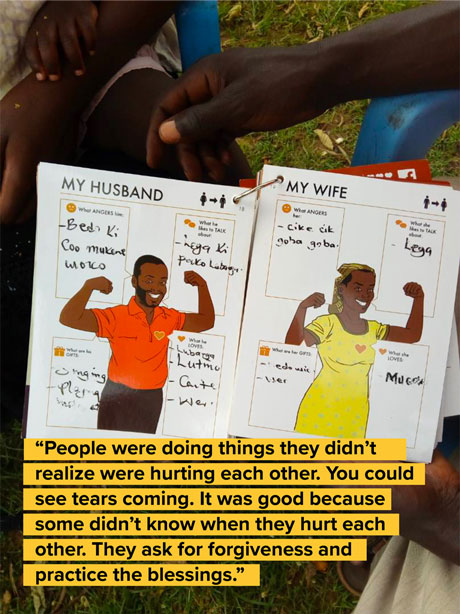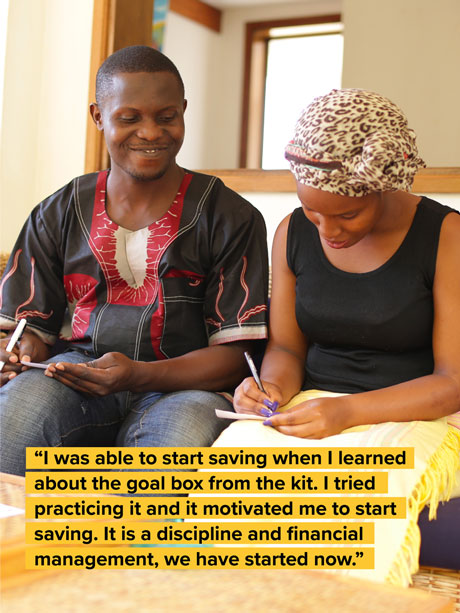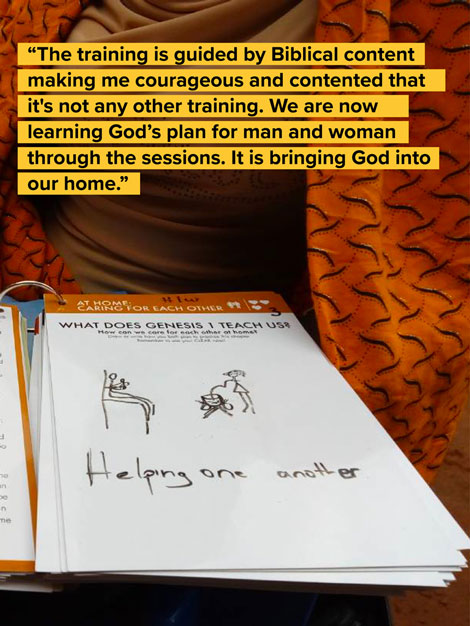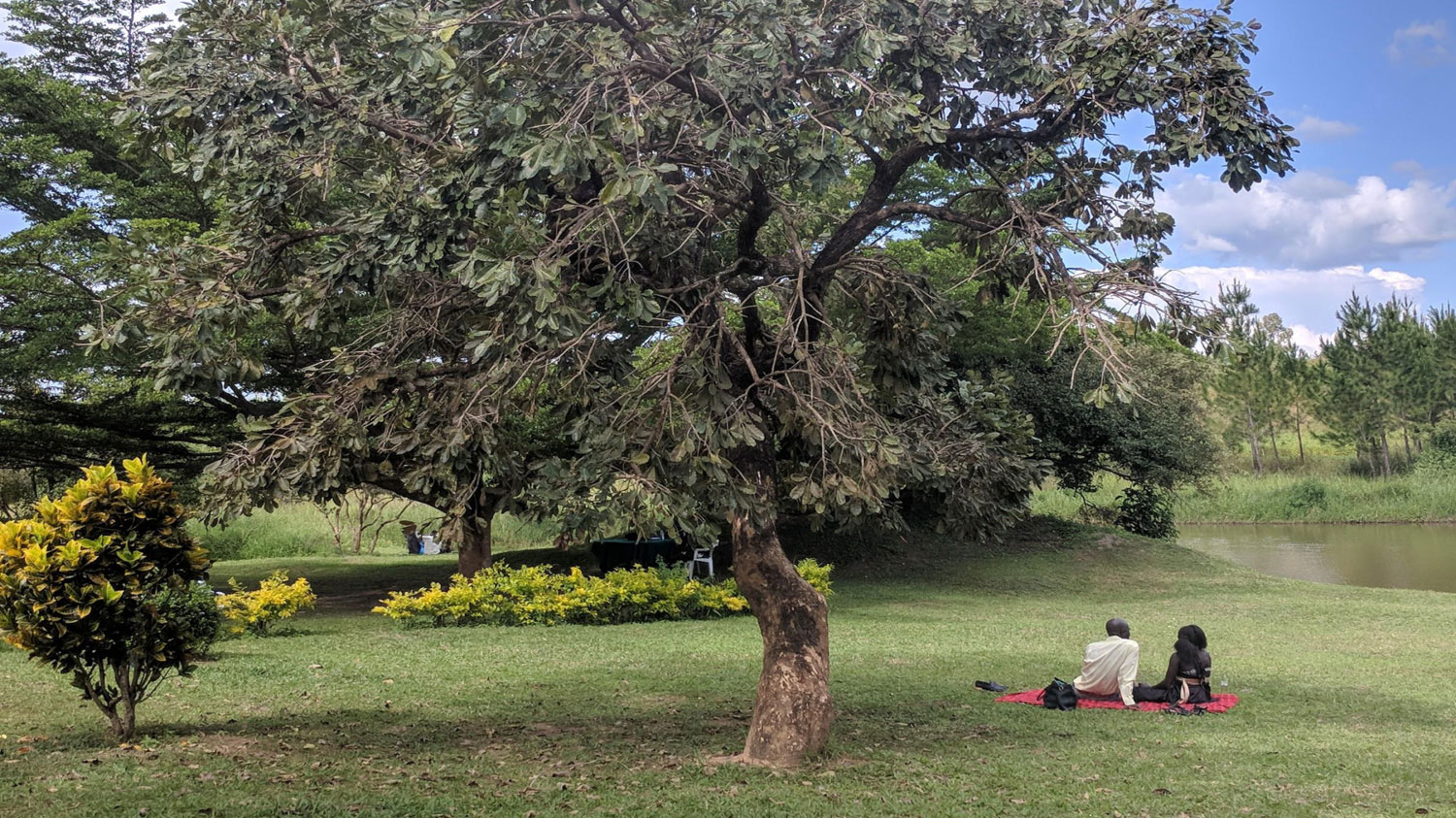
Becoming One
Strengthening relationships through faith leaders to prevent violence against women
Becoming One is a counseling program designed to bring couples closer and prevent intimate partner violence. The program is delivered in partnership with local faith leaders, who guide couples through engaging workbooks and videos that teach communication skills, emotional regulation, shared control over finances and household duties, sexual consent and pleasure.
Our process began by understanding the magnitude of the problem and how communities were solving it for themselves.
Intimate Partner Violence (IPV) is the most common form of violence against women.
*World Health Organization, 2013
What makes Becoming One different?
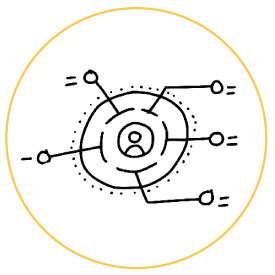
It is focused on prevention not response.

It is focused on behavioral change rather than changing attitudes.
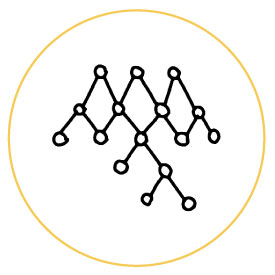
It uses existing, already invested systems and messengers to achieve scale and cost efficiency.

Becoming One helps couples build love in their relationship
Our program relies on existing structures that the community appreciates and respects. In Uganda and many other east African countries, Christian couples are expected and highly motivated to attend pre-marital counseling programs at their local churches. These faith programs were identified during our research as a perfect contact point for preventing intimate partner violence for 3 main reasons:
- Faith leaders are a trusted source of knowledge and advice, skilled in teaching and counseling;
- Faith leaders spend a lot of time counseling couples through conflict and are highly incentivized to prevent violence as opposed to just respond to it;
- Marriage and pre-marital counseling are frequently revenue sources for a church.
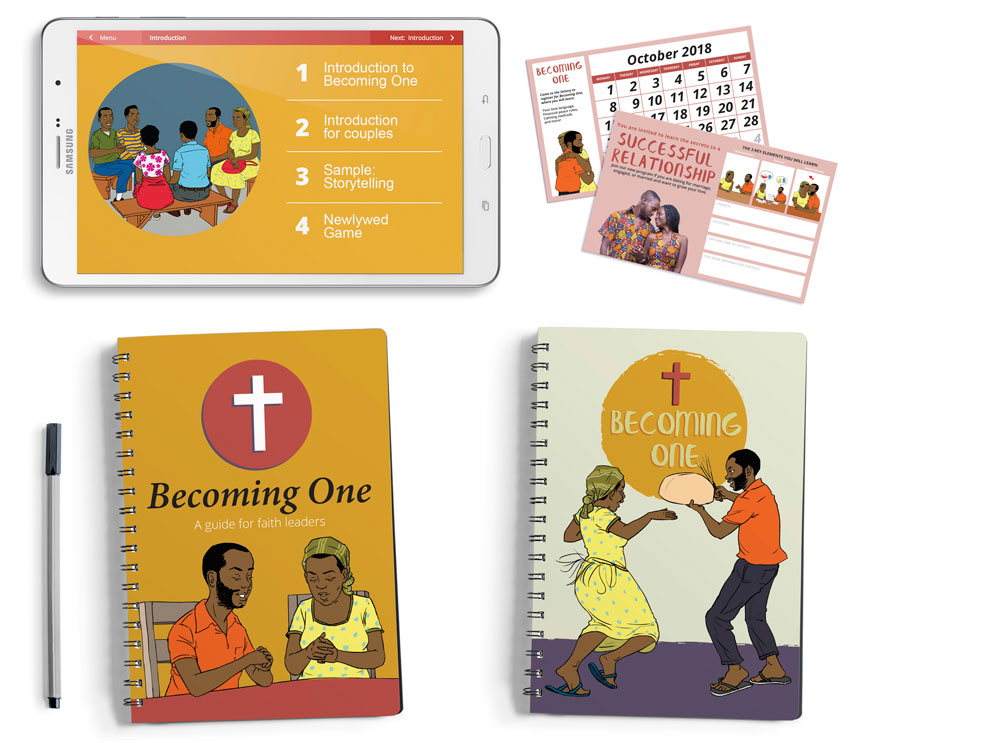
“It's like there was a scan to get what was most meaningful and needed for the generation”
- Christopher, Faith Leader

Communication
Good communication skills leads to better communication between partners and reduces conflict related to violence. Communication skills help increase positive communication between partners, especially on difficult and potentially contentious topics. It helps problem solve, and to regulate their emotions. Successful interventions such as IMAGE and SASA! Included communication skills in their intervention although these components were not specifically evaluated given the intervention included many components. (Jewkes et al.; Abramsky et al.)
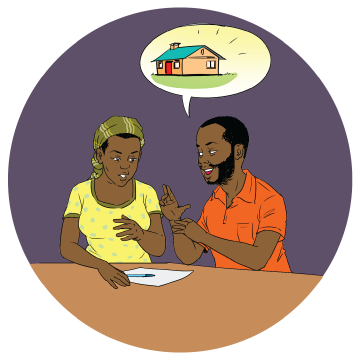
Finances
Feminist and Economic theory suggest that increasing female control and access to financial resources could lead to reduced violence by increasing a women’s bargaining power in the household. (Bloch and Rao 2002). In practice, interventions that have sought to increase women’s economic empowerment within the household have resulted in reduced violence, particularly when combined with training challenging gender norms. (Vyas and Watts 2009).

Sexual Pleasure
Interventions which increase sexual knowledge and communication skills may decrease instances of physical and sexual assault because men and women in these settings often lack the communication skills and specific vocabulary to express sexual desires and experiences (Wood and Jewkes 1997). Several successful structural interventions have included these components in their gender training to reduce IPV. (Jewkes 2008; Pronyk 2006)
1. Faith leaders learn digitally
Faith leaders receive a physical Becoming One guide and a tablet with videos on how to conduct sessions, real life scenarios and couple facing videos on harder to discuss topics like sex.
We were able to reduce training time and costs by introducing digital training materials. Experience wise, this allowed our faith leaders to learn on their own terms, made training available and accessible at all times and introduced them to new technology that reinforced their position as a leader in the community.
Becoming One leverages an already existing and large social network of faith leaders through our partner, World Vision. The program equips church leaders with engaging counseling materials that draws on existing evidence, cognitive behavioral therapy, behavioral science, and Biblical principles to achieve immediate and lasting change.
“I used to think that I would never get anything good from trainings but this training has opened my heart and has changed me to a new person.”
- Faith Leader
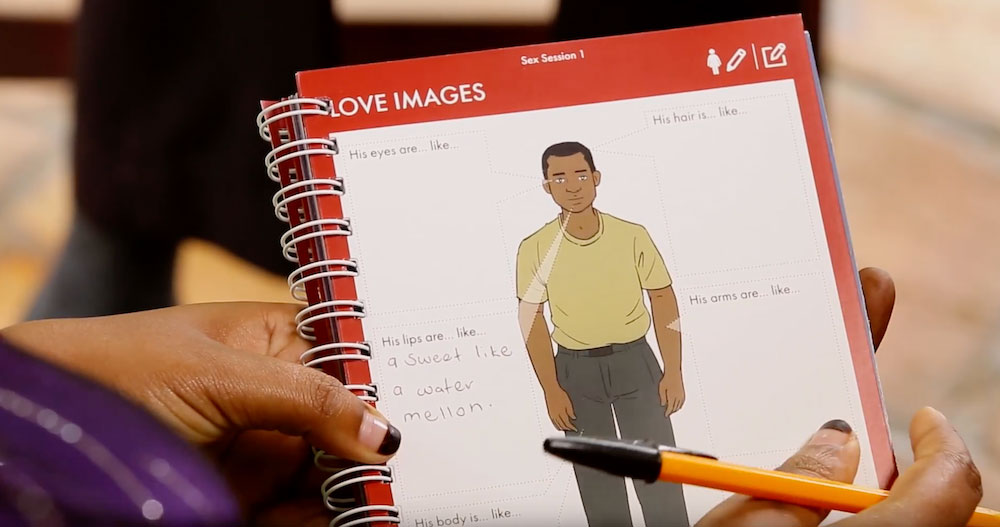
2. Couples learn
Couples are given a beautiful, full color couples guide that has contextual and relevant illustrations. They attend the Becoming One program once a week for 12 weeks where their local faith leader conducts group sessions and takes them through different lessons focused on everything from calming methods, understanding your partner’s love languages, communicating about consent and desire non-verbally and Bible study.
The couples guide is an exemplary tool that helps couples remember what they learned and captures the couple’s growth through activities such as writing vows together and organizing actions that make each other feel loved. It is almost entirely illustrated, designed to be used by illiterate users as an informative and interactive workbook.
“The pictures have such a powerful impact on me. I have learned a lot from it. I want to be like the happy couples who look so supportive.”
- Becoming One participant

3. Couples practice at home
Couples take what they learned in the group session and put it into practice at home. Examples of home practice include practicing “warm ups” and getting consent before sex, having hard conversations using new communication skills, and saving money for shared financial goals.
In the following Becoming One group session, the faith leader takes the group through a discussion of the last week’s home practice and asks the couples to share their experience openly and honestly.
“When I compare with the materials of life skills, these equip you in a way that is different.Some pictures even speak for themselves - people understand these more.”
- Becoming One faith leader
What’s happening now?
Over 1.5 years, we are conducting a full-scale randomized control trial in Uganda to rigorously capture the impact of our design on the prevention of violence. The evaluation launched in September of 2018 in which 140 Faith Leaders and 2381 couples were recruited to receive Becoming One.
To measure the effects, our research partners, Innovations for Poverty Action (IPA) is conducting three rounds of surveys with participating couples: a baseline prior to randomization, a midline after the program has concluded for 1 group of couples, and an endline 12 months from the start of the program.
During the implementation, we are conducting monitoring activities and interviews with faith leaders to understand how the program is implemented in practice.
“Before the program, we never used to sit and have a decent conversation and he could drink a lot and was never open with his finance. He used to shop all food stuffs even onions but since the program, he has started leaving money for me to buy the food stuffs. We even have peaceful and loving conversation. It is surprising that he has proposed that I should start a small business with his support something that he never agreed to at all before.”
- Becoming One participant
Project Timeline
Endline of impact evaluation
By this time a total of 144 faith leaders and over 2,000 couples would have completed the full Becoming One program.
Impact evaluation begins
Becoming One cohort 1 of 3 begins
Resource
